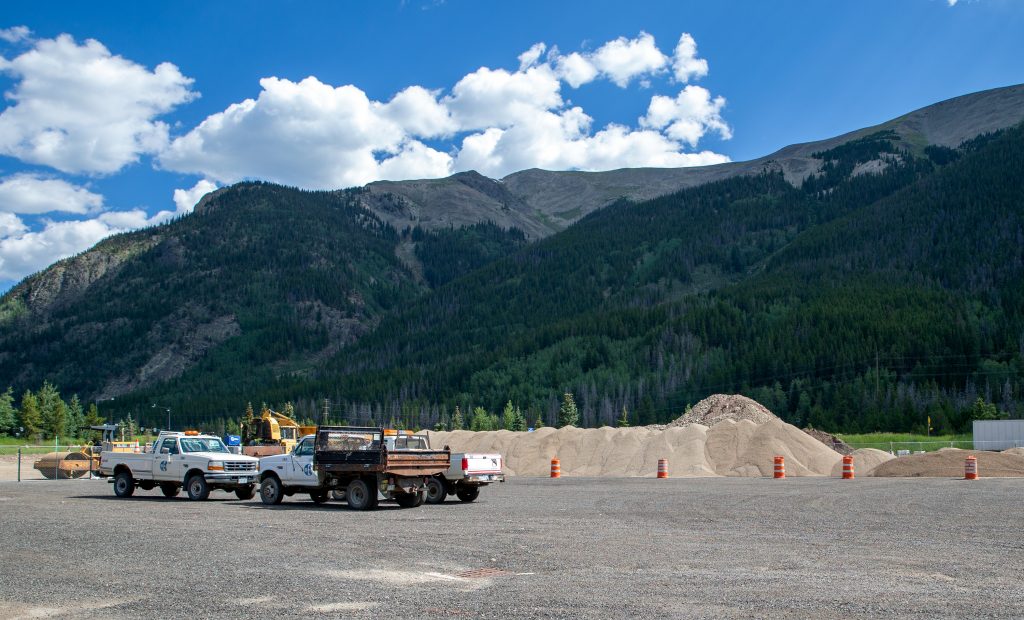As ski season nears, we take a look at ski resort employee housing, including Copper Mountain’s new project

Liz Copan / ecopan@summitdaily.com
Editor’s note: This story has been updated to correct the number of units at Copper Mountain Resort’s Edge and Sky Chutes Landing employee housing.
FRISCO — Employee housing is the key that makes it financially possible to be a seasonal ski resort employee, an important workforce segment in Summit County.
Although entry-level employees at the four Summit County ski resorts — Arapahoe Basin Ski Area, Breckenridge Ski Resort, Copper Mountain Resort and Keystone Resort — are paid above the state minimum wage, the cost of living in Summit County is about 25% higher than the state average.
Each of the Summit County ski resorts offers employee housing in some form, but Breckenridge, Keystone and Copper all must offer housing to a specific percentage or number of employees in compliance with their planned unit development requirements.
Keystone, for example, is required to provide housing to 40% of its seasonal and full-time employees. Since Breckenridge and Keystone are owned by Vail Resorts and are only 16 miles apart, they share 1,800 employee housing beds in Summit County.
Vail Resorts would not release the price of its housing units or the number of employees at each resort, only saying the total number of Vail Resorts employees is 40,000.
At Copper Mountain, the resort offers employee housing in dormitory-style apartments as well as deed-restricted units. The resort’s main employee housing facility, Edge, costs $337 per month in rent for a double-occupancy room and is within walking distance to Copper Mountain.
Requiring employees to bunk up, Edge is more appealing to younger, seasonal workers.
In addition to the 582 beds in dormitory-style rooms, Copper also provides 111 deed-restricted condos and 15 deed-restricted townhomes. Its latest employee housing project, Sky Chutes Landing, is under construction and will provide next year’s seasonal employees with 44 additional units, including a mix of studios and one-, two- and three-bedroom apartments. At peak season, Copper has about 1,500 employees, about 1,100 of which are seasonal.

Liz Copan / ecopan@summitdaily.com
Even after its new housing project comes online, a deficit in available housing remains, though many employees live in private rentals or deed-restricted housing under the covenants of the county or individual towns.
A-Basin did not release the number of beds its provides or the number of people it employs. Its website says it offers “several housing options for first-year employees and resources for returning employees looking for a place to live in Summit and the surrounding counties.”
A-Basin stated clearly on its website that employee housing is limited and distributed on a first-come, first-served basis.
For those A-Basin workers who do secure employee housing, prices were listed at $460 to $560 per month, depending on whether the room was shared.
With entry-level employees making $12.25 per hour at three of Summit County’s resorts, an employee working 40 hours per week — something that is not guaranteed — would make about $2,123 per month before taxes.
At Copper Mountain, rent at Edge would amount to about 16% of an entry-level employee’s income. At A-Basin, rent would be closer to 22% at its most affordable housing units, assuming a similar entry-level pay rate.
The federal government recommends spending no more than 30% of monthly gross income on housing.
Employees who are hoping to find housing on their own often turn to the Summit Combined Housing Authority. Executive director Amy Priegel said the organization directs ski resort employees to large apartment complexes, connects them with local property managers and refers them to the Housing Works Initiative at the Family and Intercultural Resource Center.
“We try to give them as wide of a net as possible, but a lot end up coming back saying they found housing on their own through Facebook posts and Craigslist,” Priegel said.
While free-market housing prices are rarely within the recommended 30% range, Priegel said employees who have secured housing are “just happy to find a place to stay and live up here for the lifestyle.”
The county and individual towns continue to work toward expanding employee and deed-restricted housing options while the Housing Authority has been working on a countywide assessment of housing, with one forum focused specifically on the seasonal workforce.
Priegel said timing is the biggest issue as a large influx of seasonal workers comes and goes in unison.
The bottom line, Priegel said, is that “it’s tough.”

Support Local Journalism

Support Local Journalism
As a Summit Daily News reader, you make our work possible.
Summit Daily is embarking on a multiyear project to digitize its archives going back to 1989 and make them available to the public in partnership with the Colorado Historic Newspapers Collection. The full project is expected to cost about $165,000. All donations made in 2023 will go directly toward this project.
Every contribution, no matter the size, will make a difference.





